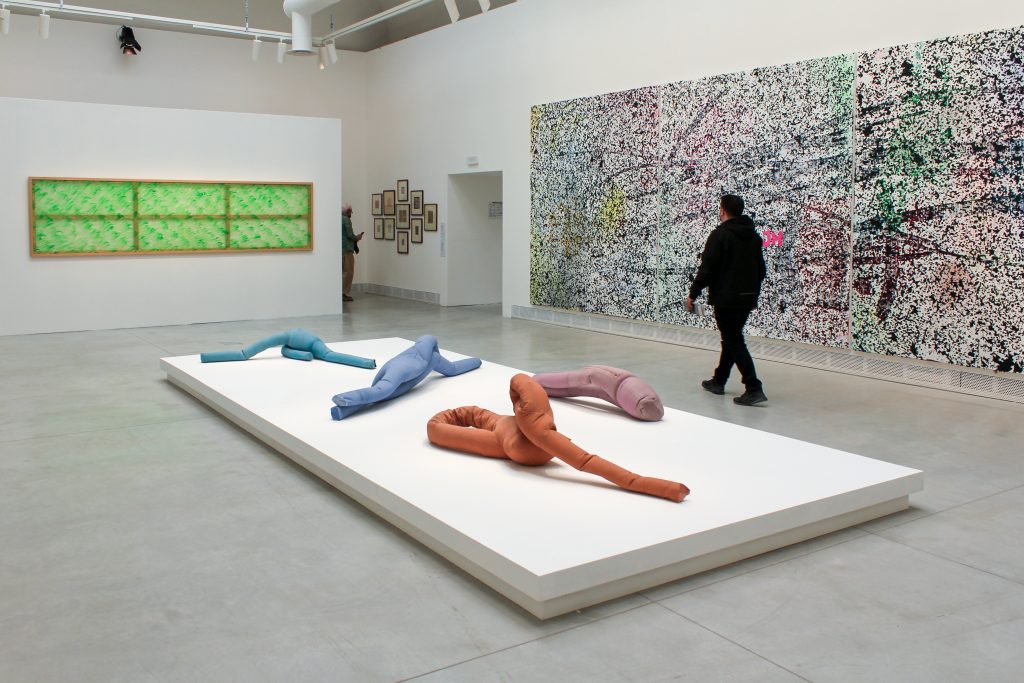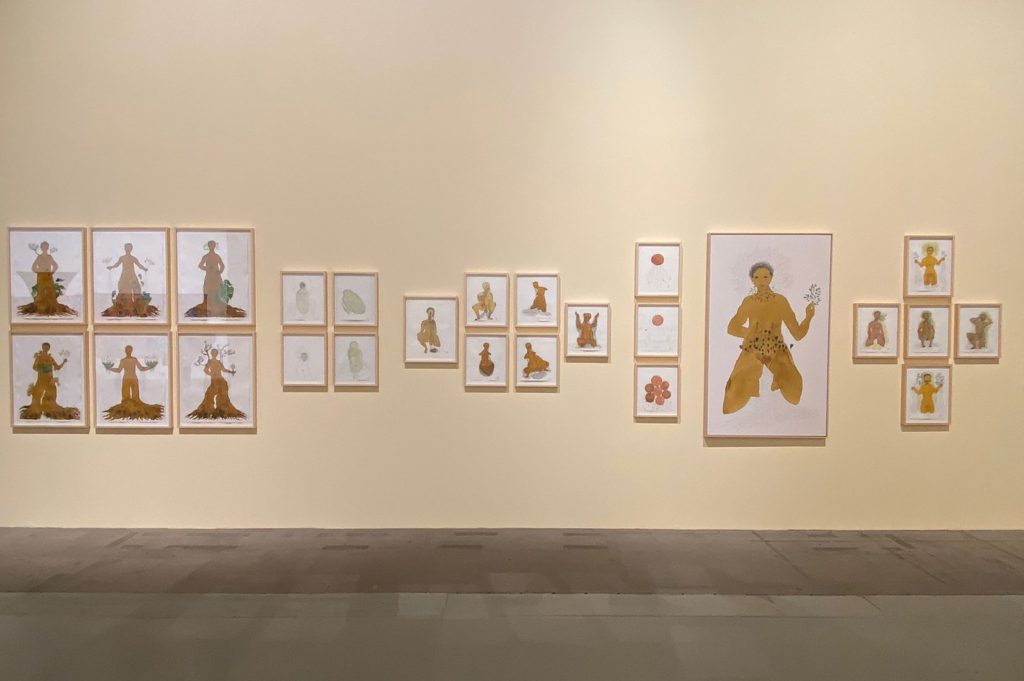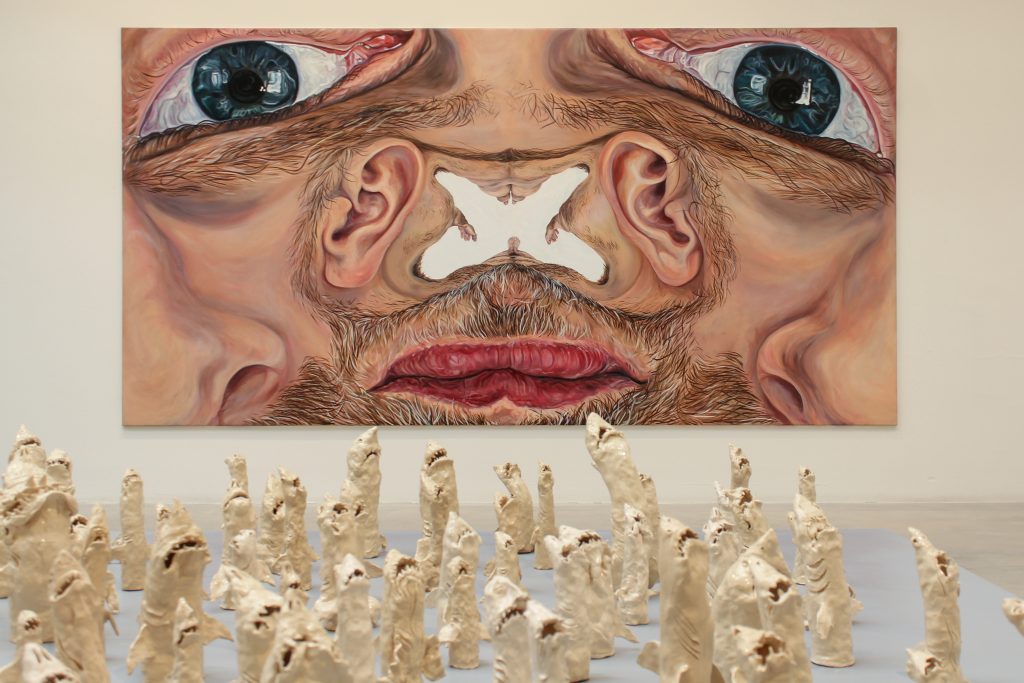Venice Biennale 2022: Depictions of The Human Body
AI portraits, sculptures made from plants, anthropomorphic figures and more at the exemplary art event

Across dozens of national pavilions at this year’s Venice Art Biennale, the theme “The Milk of Dreams” has been explored and interpreted in stunning ways. It’s clear that curator Cecilia Alemanni knew there were endless possibilities when she chose the concept, which is the title of a book of fairytales by Leonora Carrington (1917-2011), a British-born Mexican artist who excelled at the surreal. The book tells a story of transformation, where bodies and identities can be changed through imagination; an idea that’s reflected at the 2022 Venice Biennale.

The event (which is opens tomorrow, 23 April and will be on show until 27 November) takes place between the Central Pavilion at the Giardini and the Arsenale, and presents 1,433 works created by over 213 artists from 58 nations. Throughout, the focus seems to be squarely on our understanding of humans and our relationship with the natural world and each other. For millennia, the human body has been a vehicle for artists to explore these themes—and it remains so in the pavilions here. Whether on film, in sculpture, paintings or performance, Venice Biennale visitors will observe all kinds of bodies, each telling a different story of identity and transformation.

Simone Leigh’s “Brick House”
Initially commissioned for NYC’s High Line, Simone Leigh‘s massive bronze sculpture “Brick House” is a powerful force. The 16-foot-tall bust of a Black woman with an eye-less face framed by braids literally and figuratively explores the concept of strength and resilience. The piece also references different architecture styles, from the dome of a basilica to Batammaliba houses of Benin and Togo—structures designed to welcome and protect. This imposing, beautiful work is part of Leigh’s Anatomy of Architecture series.

Lavinia Schulz and Walter Holdt’s “Manskenfigur Toboggan Frau”
Various installations feature pieces from different eras, such as the collection of works by Lavinia Schulz and Walter Holdt. Schulz was a dancer who, between 1919 and 1924, staged a series of ballets in Hamburg that utilized Expressionist costumes she made with Holdt, her husband. The Weimar-era costume “Manskenfigur Toboggan Frau” (originally made in 1924 and recreated in 2005) transforms the performer’s body into a creature somewhere between an insect, a robot and a superhero. These creations were hidden away in storage after Schulz and Holdt passed away in the late 1920s and were only discovered again in the ’80s.

Precious Okoyomon’s “To See The Earth Before the End of the World”
NYC-based artist Precious Okoyomon explores metamorphosis with their immersive installation “To See The Earth Before the End of the World” (2022), which has been constructed with organic materials: soil, plants, wool and even blood and live butterflies. Okoyomon uses kudzu—a species of vine introduced to the US from Asia during the 1870s—as a kind of metaphor for diaspora, and as an anti-colonial protest. The plant, named “resistance is an atmospheric condition” within the installation, is just one element of an overall moving and powerful work.

Sara Enrico’s “The Jumpsuit Theme”
Italian artist Sara Enrico‘s work “The Jumpsuit Theme” (2022) pays homage to the futurist artist Thayaht (aka Ernesto Michahelles), the 1920 creator of a famous jumpsuit that became an icon of workwear. Enrico creates sleeves from technical fabric that are then filled with pigmented cement. The result is a collection of jewel-toned sculptures that evoke vaguely human forms, abandoned lifelessly on the ground.

Sandra Mujinga’s “Sentinels of Change”
Science fiction, posthumanism and Afrofuturism are at the heart of Congolese artist Sandra Mujinga’s work. At Arsenale, Mujinga’s “Sentinels of Change” (2021) presents a neon green saturated environment—powerful and almost disturbing—with ghostly figures standing throughout. These human-esque forms (made from recycled materials) cast an eerie, otherworldly mood throughout the room.

Sidsel Meineche Hansen’s Sculptures
Sculpture “Daddy Mould” (2018) and video “Maintenancer” (2018) by Denmark-born, London-based artist Sidsel Meineche Hansen are shocking yet simultaneously innocuous. The video depicts the macabre maintenance of sex dolls, while the fiberglass sculpture is a silicon sex doll mould. There’s commodification and emptiness existing here that’s strangely unsettling.

Mrinalini Mukherjee’s Hemp Sculptures
Textiles are central to the work of Indian sculptor Mrinalini Mukherjee (1949-2015) whose large hemp sculptures appear at this year’s Biennale. To make her mythological figures, Mukherjee adapted Arab macramé hand-weaving—making it even more complex and laborious. These naturally-dyed pieces give form to figures that are simultaneously soft and powerful, conveying more expression than one would expect from knotted threads.

Andra Ursuta’s Sculptures
Romanian artist Andra Ursuta‘s sculptures oscillate between nature and science fiction, existing as alien creatures and anthropomorphic cyborgs. Ursuta often begins her works by creating a cast of her own body, which is then transformed, mutilated, sometimes merged with everyday objects. She combines traditional methods with innovative future-forward techniques, like wax casting and 3D printing with materials such as crystal and resins.

Rosana Paulino’s Jatobá Series
São Paulo-based artist Rosana Paulino’s work often focuses on identity, specifically that of Black women existing in contemporary Brazilian society. Her Jatobá series comprises several works depicting women as Jatobá trees—representing women’s wisdom and connection to the earth. These anthropomorphic figures (mostly watercolor and graphite on paper) celebrate Afro-Brazilian women.

Hershman Leeson’s AI Photography
Among the many photographic works, Hershman Leeson’s “Missing Person, Cyborg” (2021) and “Missing Child, Cyborg” (2021) feature faces generated by artificial intelligence, specifically from the Generated Photos website. This is the latest installation of Leeson’s longterm project where the American artist investigates the boundaries between natural and artificial life.

Jana Euler’s Mixed Media Artworks
Between painting and sculpture, Germany-born and Brussels-based artist Jana Euler often confronts viewers with a kind of surrealism based on odd dimensions, proportions and distortions. In the painting “Venice Void” (2022) a face is deconstructed and put back together in a kaleidoscopic manner. In front of it, 111 small sculptures of sharks with wide-open mouths sit, tiny and seemingly harmless despite the title “Great White Fear” (2021).
Precious Okoyomon’s “To See The Earth Before the End of the World” courtesy of the artist, image by Paolo Ferrarini












